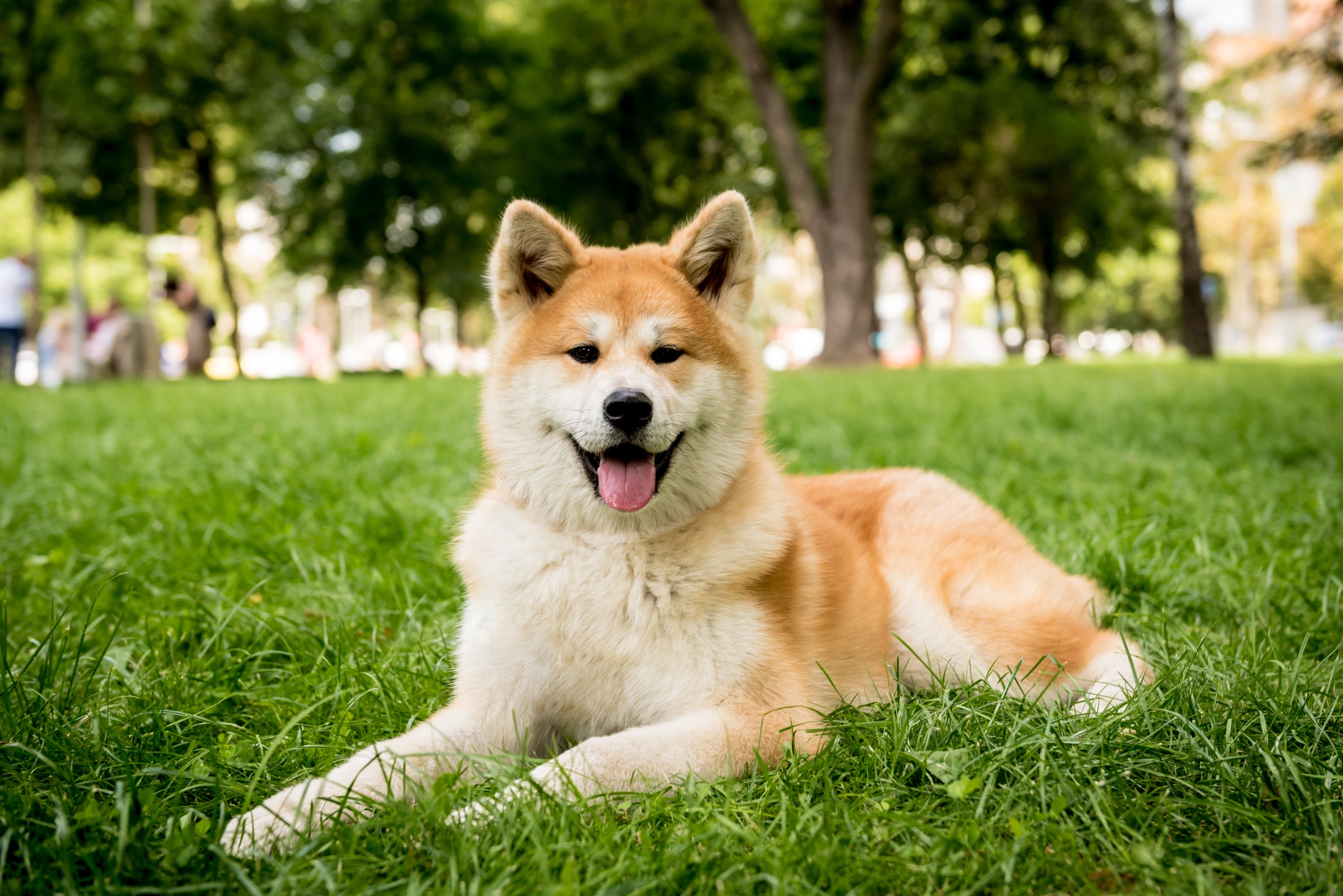Authentic Japanese dog breeds

Japanese dog breeds
There are six authentic Japanese dog breeds
Usually, the term “Japanese dog” (“Nippon ken” in Japanese) refers specifically to the six native breeds named in the Japan Dog Standard, established by the Japanese Dog Preservation Society in 1934. The six Japanese dog breeds are also designated as national natural monuments.
In the broad sense of the term, “Japanese dogs” also includes breeds native to Japan that are based on or crossbred with foreign breeds. The four breeds are the Pekinese, Tosa Fighting Dog, Japanese Terrier, and Japanese Spitz.
They have a widespread image of being highly loyal to their owners. With the growing popularity of Japanese dogs around the world, more people are becoming interested in owning a Shiba or Akita.
Note that the Japanese word for “dog” is ”犬”(inu) and that there is another reading for 犬, which is ken. They might be used interchangeably in dog breed names.
Let’s take a look at the six types of Japanese dogs.
Shiba Inu

Designated a national natural treasure in 1936, the Shiba Inu is one of the most popular breeds of Japanese dogs, with a large number of dogs bred. In recent years, it has become so popular that there has been a boom overseas.
The Shiba Inu is alert, but also patient and loyal to its owner. It is said that the ancestors of today’s Shiba Inus lived with humans during the Jomon Period. Although the Shiba Inu was on the verge of extinction for a time, efforts have been made to preserve the breed since it was designated a natural monument in 1936. It is estimated that 80% of the Japanese dog breeds bred in Japan today are Shiba Inu.
Height: 38.5-41.5 cm
Body weight: approx. 9 kg
Average life span: 14-15 years
Akita Inu

The Akita Inu is a large Japanese dog that has been bred in Akita Prefecture. It is one of the largest dogs in Japan. The Akita Inu made headlines when it was presented to the Russian Olympic Gold Medalist Zagitova. Also, Helen Keller brought back an Akita Inu when she came to Japan in 1937.
In the 1630s, the Japanese dog breed (originally a medium-sized beasthound from the Tohoku region) was enlarged through crossbreeding by the feudal lords of the Akita region to increase the fighting spirit of the warriors. There was a time when the number of purebreds was drastically reduced due to the promotion of mixing with fighting dogs, but in 1931, the Akita Inu was designated as a national natural monument and escaped extinction due to species preservation efforts.
The Akita Inu is calm and composed. The dogs are loyal and obedient to their masters, as known by the famous “Loyal Dog Hachiko,” whose statue was built in front of Shibuya Station in Tokyo. Hachiko is known for waiting at the ticket gate of Shibuya Station for his master, Mr. Ueno, after Ueno’s death. Hachiko did this every day for 10 years until he died himself.

Akita Inus are known as smart dogs that learn quickly and are easy to train.
While the number of Akita Inus bred in Japan has been decreasing, the number of Akita Inus bred overseas has been increasing. The number of Akita Inus registered overseas has now exceeded the number registered in Japan. Akita Kens are more popular overseas than in Japan!
Height: approx. 67 cm
Body weight: approx. 48 kg
Average life span: 10 to 12 years old
Hokkaido Inu

The Hokkaido Inu lived with the Ainu, the indigenous people of Hokkaido, and was bred to hunt bears and other animals. In Japan, the dog became famous when it appeared as a character in a commercial for Softbank, a cell phone company.

Height: 48-52 cm
Body weight: approx. 20 kg
Average life span: 13-15 years
Kai Ken

The Kai Ken was born in the mountainous region of Kai (now Yamanashi Prefecture). The dog was named after this region. It hunted deer and wild boar and its roots are said to be older than those of other Japanese dog breeds, dating back to the BC era. Kai Kens have inherited the characteristics of hounds, and some dogs still work as hounds. They are truly obedient to their masters, but are very wary of strangers. It is a Japanese dog, but is rarely seen.
Height: Approximately 50 cm
Weight: 11-23 kg
Average life span: 13 years
Kishu Inu

The Kishu Inu was born in the mountainous areas of what is now called the Kishu region (near Wakayama and Mie prefectures) and was bred as a hunting dog to hunt raccoon dogs, deer, and wild boars.
They are agile and wary of strangers, but patient and calm, loyal and obedient to their masters.
Height: 50-56 cm
Weight: 15-23 kg
Average life span: 13 years
Shikoku Ken
The Shikoku Ken is an indigenous dog that lived in the mountains of present-day Kochi Prefecture. It is believed to have its roots in a wild dog called the “Yamainu,” which resembles a wolf in appearance. The wolf-like wildness of the Shikoku Ken is what makes it so appealing. They are agile, combative and alert, but loyal and obedient to their masters. They are also active hunters. Because of its competitive spirit, it is considered difficult to keep as a pet.
Height: 49 to 55 cm
Body weight: 18-24 kg
Average life span: 13-14 years
Characteristics of Japanese Dogs
- Japanese dogs are adapted to warm and humid climates and are tolerant of both cold and heat. The exception to this is the Hokkaido dog, which is less tolerant of high temperatures. Hokkaido is the north most prefecture in Japan.
- As hunting dogs, they have been engaged in hunting wild animals and birds in cooperation with humans, and have their high physical ability.
- They are simple, loyal, and brave, and these qualities are the reason why Japanese dogs have been loved by people in Japan and overseas.
- The body, limbs, and proboscis of Japanese breed dogs are sturdy. They have not undergone as much selective breeding as European breeds, so they are not so far removed from wolves in appearance and coat quality.
- They are very loyal to their masters, but are wary of strangers, making them ideal for guard dogs. However, there are many friendly Shiba Inus that are suitable for pet dogs.
- When a Japanese dog is kept in a family, it decides on one person in the family as its boss and behaves accordingly. They do not like to interact with many people, so they prefer to have only one person to interact with. This may make it difficult to keep a Japanese dog in a family because the dog may not be friendly to other than the one person who is the boss, and the other family members may feel lonely.
- Japanese dogs tend to have strong egos and are not psychologically dependent on their owners because they tend to make decisions based on their own moods and feelings. This is a tendency not often seen in foreign dogs, and if you are used to such Western dogs, it may be difficult to raise a Japanese dog.
Of the more than 500,000 purebred dogs registered annually in Japan, Japanese dogs account for a little more than 10 %, or about 55,000.










